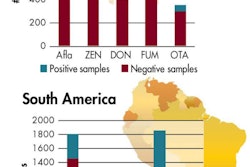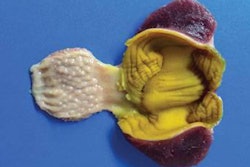
Duck feeds are often formulated using corresponding values from chicken feed specifications. Nevertheless, as the significance of ducks, and particularly Pekin ducks, as a source of meat for a large portion of human population increases, we start to see more research surfacing particular to this species. Not surprisingly, the majority of new research originates in Asia, where Pekin duck meat is consumed at relatively high amounts compared to the rest of the world.
Such is a recent trial in China, reported in the Poultry Science journal, describing a dose-response experiment with eight dietary choline levels (302, 496, 778, 990, 1,182, 1,414, 1,625 and 1,832 mg/kg). The trial was conducted with male white Pekin ducks to estimate the choline requirement from hatch to 21 days of age. Three hundred and eighty-four male ducklings were randomly assigned to dietary treatments, each containing six replicate pens with eight birds per pen. At 21 days of age, weight gain, feed intake, and feed/gain from each pen were calculated. Two ducks selected randomly from each pen were euthanized, and the liver was collected to determine total lipids, triglycerides and phospholipids.
In this study, perosis, poor growth and high liver fat were all observed in choline-deficient ducks, and incidence of perosis was zero when dietary choline was 1,182 mg/kg. As dietary choline increased, weight gain and feed intake increased linearly or quadratically (P < 0.05). As dietary choline increased, total lipid and triglyceride levels in the liver decreased linearly, whereas liver phospholipids increased linearly (P < 0.05). Clearly, the lipotropic activity of choline can be associated with increasing phospholipid levels at a high dietary choline level. According to broken-line regression analysis, optimal choline requirements for weight gain and feed intake were 810 and 823 mg/kg, respectively. Higher requirements should be considered to prevent perosis and excess liver lipid deposition.
Interestingly, choline dietary specifications for broilers are lower at 400-700 mg/kg, indicating once more that ducks should not be treated as broilers in terms of feed formulation.
















